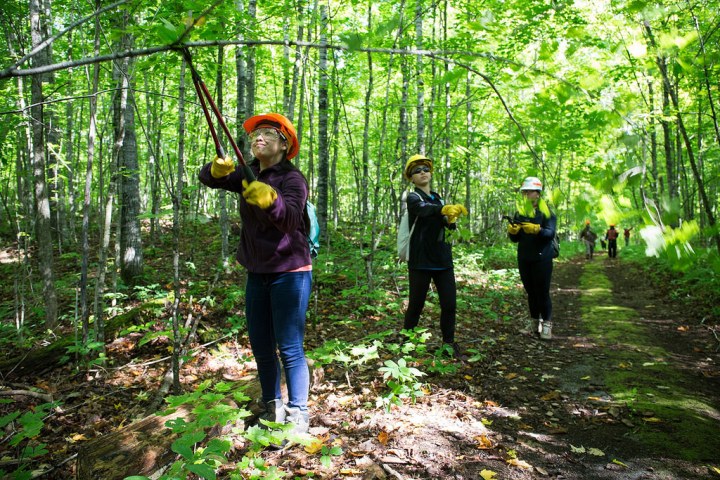Voluntary community participation providing encouraging results in Kenya, needs empowerment
Working with local communities can greatly enhance conservation efforts.

- Country:
- Kenya
Safeguarding Kenya’s sites of global biodiversity conservation importance - Key Biodiversity Areas - is crucial to the country’s well-being. The ecosystem services and goods provided by these sites are invaluable. From forests which supply timber, food, fuel, and bioproducts, not to mention the provision of ecological functions such as carbon storage and nutrient cycling, to wetlands that purify and replenish our water, and also provide the fish and rice that feed billions, the list is long.
Unfortunately, these sites are under severe pressure from human activity. Deforestation, land use change, water abstraction among others are some of the major threats afflicting them. Putting in place good mitigation strategies is key to conserving these sites. Inclusion of local communities living adjacent to the sites is one way of ensuring sustainability.
In late 2017, a group of local community members went public to decry unabated illegal logging activities in Arabuko-Sokoke Forest. What they did not know was that their exposé would trigger a chain of events that would eventually culminate into a national logging moratorium. Through their voices, these local communities managed to draw national attention to a serious threat facing one of Kenya’s iconic coastal forest.
Last year, a local community member stumbled upon a dead hyena somewhere in the Maasai Mara. Suspecting the wild animal to have been poisoned, he immediately alerted relevant authorities. Through his swift action, hundreds of secondary wildlife poisoning deaths, including those of critically endangered vulture species, were averted. Several other wildlife poisoning incidents in the area have been reported by community members and promptly addressed, leading to fewer deaths.
Back in 2013, a monitoring team comprising of local community members discovered the nesting site of the endangered Clarke’s weaver, a bird found only in Kilifi County, Kenya. This discovery was a major milestone for conservation of this threatened bird, warranting international attention. No known account of the species’ breeding grounds had been reported prior to this discovery.
These three occurrences are just a few examples of the important role played by local communities in the conservation of key sites and biodiversity in Kenya.
The site support groups (SSGs) model being promoted by Nature Kenya - the East Africa Natural History Society, Africa’s oldest environmental society, is one approach worth mentioning. This model entails working closely with groups of local volunteers across Kenya’s Key Biodiversity Areas. The groups act as an entry point for wider community involvement in the conservation and management of biodiversity. They are actively engaged in site patrolling, policing and monitoring, habitat management and restoration, and environmental awareness and advocacy activities. The groups employ simple, inexpensive tools and methods to collect vital data through citizen science initiatives. This kind of engagement underscores the value of voluntary public participation in conservation.
A healthy environment means a better life for people. As such, conservation and human development need to be mutually reinforcing. Linking community livelihoods with conservation is another way of incentivizing them to take action. Establishment of nature-based enterprises such as beekeeping, butterfly farming, ecotourism among others, provides opportunities for these local communities to sustainably harness available natural resources. The Kipepeo butterfly project in Gede, Malindi for instance, is enabling local hundreds of community members to earn livelihoods while conserving the Arabuko-Sokoke Forest. Community-based approaches have the potential to spur up conservation action at key sites. The recently released Global Assessment Report on Biodiversity and Ecosystem Services by the UN Intergovernmental Science-Policy Platform on Biodiversity and Ecosystem Services (IPBES) acknowledges this point. The report recognizes contributions by local communities in limiting deforestation. These local governance regimes, IPBES notes, have been proven to be effective in mitigating habitat loss, at times even more effective than formally established protected areas.
Local community engagement in the protection of nature needs to be encouraged. These communities need to be empowered to effectively take conservation action. Conservation policies also need to take into account the needs of local communities by providing some form of benefit mechanism for the locals. At this time of increasing pressure on the world’s biodiversity, community-based conservation approaches should be given a chance.
NOTE: The opinions expressed by the author are his own.
- READ MORE ON:
- sustainability
- conservation
- Kenya
- Vultures
ALSO READ
UAE: Sustainability, unity and youth take centre stage at opening ceremony of Gulf Youth Games
UN Assembly President announces launch of first-ever ‘Sustainability Week’
Sustainability has to be the anchor for development in 21st century: UNGA President Dennis Francis
Assembly President announces first-ever ‘Sustainability Week’
DEWA highlights its sustainability efforts at Abu Dhabi Sustainability Week










